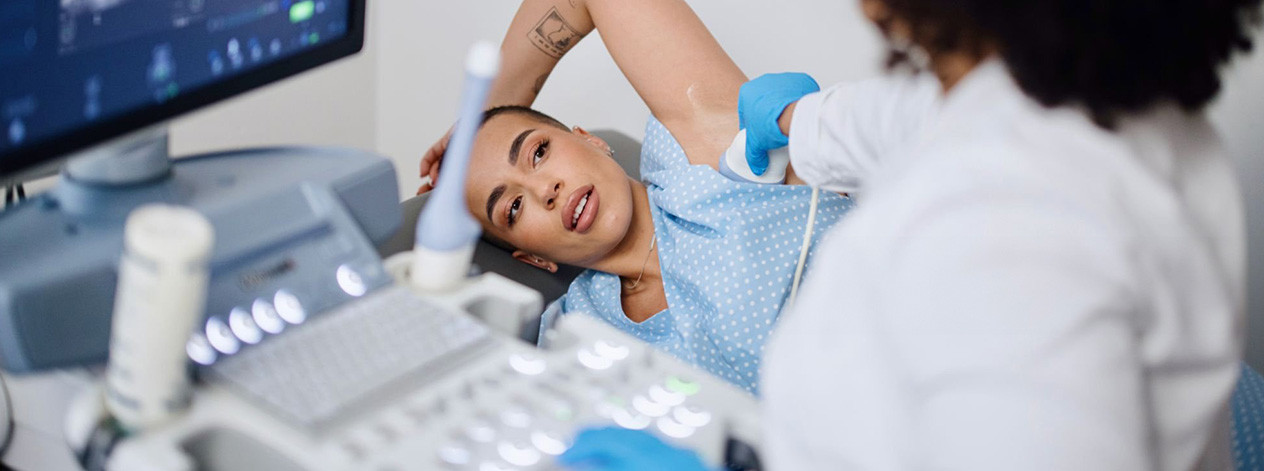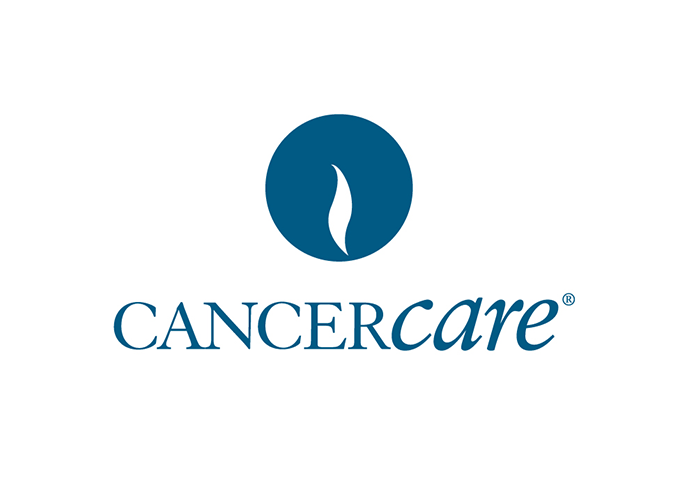Cáncer de mama
Breast cancer is a common cancer, with more than 232,000 new cases diagnosed in the United States each year.(1) The disease occurs most frequently in women, but can also occur in men.
The normal breast has 6 to 9 overlapping sections called lobes and within each lobe are several smaller lobules that contain the cells that produce milk. The lobes and lobules are linked by thin tubes called ducts, which lead to the nipple in the center of the breast. The spaces around the lobules and ducts are filled with fat. Lymph vessels carry colorless fluid called lymph, which contains important immune cells. The lymph vessels lead to small bean-shaped structures called lymph nodes. Clusters of lymph nodes are found in the axilla (under the arm), above the collarbone, and in the chest.
The suspicion of breast cancer often first arises when a lump is detected in the breast during breast examination or a suspicious area is identified during screening mammography. In order to diagnose the cause of the suspicious area or lump in the breast, a physician will perform a biopsy. A biopsy can be performed on an outpatient basis. During a biopsy, a physician removes cells for examination in the laboratory to determine whether cancer is present. Other information obtained from the biopsy sample will play an important role in treatment decisions. If the biopsy indicates that cancer is present, additional surgery may be performed after the patient and doctor select a course of treatment.
There are many types of breast tumors. Some breast tumors are benign (not cancerous). Benign breast tumors such as fibroadenomas or papillomas do not spread outside of the breast and are not life threatening. Other breast tumors are malignant (cancerous). The most common type of breast cancer is called ductal carcinoma and begins in the lining of the ducts. Another type of cancer is called lobular carcinoma, which arises in the lobules.
When cancer is identified in the biopsy specimen, several other tests may be performed on the specimen in order to further classify the cancer and determine the optimal treatment strategy. Based on the stage of the cancer and the results of these tests, treatment of breast cancer is personalized for each individual. Treatment may involve surgery, radiation therapy, chemotherapy, targeted therapy, and/or hormonal therapy.
Stage: Stage is a measure of the extent of the cancer, and is based on the size of the tumor and the presence or absence of lymph node metastases and distant metastases. Determining the stage of the cancer may require a number of procedures, such as blood tests, chest x-rays, mammography, computed tomography (CT), or magnetic resonance imaging (MRI). For patients with early-stage cancer, the spread of the cancer to the axillary (under the arm) lymph nodes may be assessed through either sentinel lymph node biopsy or axillary lymph node dissection. Axillary lymph node dissection involves the removal of many axillary lymph nodes; the procedure can be associated with chronic side effects such as pain, limited shoulder motion, numbness, and swelling. Sentinel lymph node biopsy is a more recent procedure that involves the removal of only a small number of nodes, or even a single node. If the sentinel lymph nodes are negative (show no evidence of cancer), then no further lymph node surgery is required. Sentinel lymph node biopsy is becoming more widely adopted in the clinical setting for determining whether cancer has spread to the lymph nodes in women with localized breast cancer.
HER2 status: Twenty to thirty percent of breast cancers overexpress (make too much of) a protein known as HER2. Overexpression of this protein leads to increased growth of cancer cells. Fortunately, the development of treatments that specifically target HER2-positive cells – such as Herceptin® (trastuzumab) and Tykerb® (lapatinib) — has improved outcomes among women with HER2-positive breast cancer. For this reason, HER2 status should be accurately measured on all breast cancers.
Hormone receptor status: Some breast cancer cells express an abundance of receptors for the female hormones estrogen and/or progesterone. These cancers– called hormone receptor-positive –are typically associated with a better prognosis and are treated differently from breast cancers that are hormone receptor-negative. Patients with hormone receptor-positive breast cancer often receive treatment with hormonal therapy, such as tamoxifen or an aromatase inhibitor. For more information, go to Hormonal Therapy.
Recurrence Score: Among women with early-stage breast cancer, the expression, or activity, of certain genes has been linked with the likelihood of cancer recurrence. Oncotype DX is a genomic test that predicts risk of recurrence among selected women with early-stage breast cancer, including women with ductal carcinoma in situ (DCIS). Use of the Oncotype DX test may help guide decisions about whether about additional treatment with chemotherapy or radiation therapy is necessary after surgery.
For more information about OncotypeDX, visit http://www.mytreatmentdecision.com/

LEARN MORE
Patients who have already undergone surgery and lymph node evaluation and know their stage of cancer may select from the options below. In order to learn more about surgery and sentinel lymph node dissection, go to Surgery for Breast Cancer.
Carcinoma In Situ: Approximately 15-20% of breast cancers are very early in their development. These are sometimes referred to as carcinoma in situ and consist of two types: ductal carcinoma in situ (DCIS), which originates in the ducts and lobular carcinoma in situ (LCIS), which originates in the lobules. DCIS is the precursor to invasive cancer and LCIS is a risk factor for developing cancer.
Stage I: Cancer is confined to a single site in the breast, is less than 2 centimeters (3/4 inch) in size and has not spread outside the breast.
Stage IIA: Cancer has spread to involve underarm lymph nodes and is less than 2 centimeters (3/4 inch) in size or the primary cancer itself is 2-5 centimeters (3/4-2 inches) and has not spread to the lymph nodes.
Stage IIB: Cancer has spread to involve underarm lymph nodes and/or the primary cancer is greater than 5 centimeters (2 inches) in size and does not involve any lymph nodes.
Stage IIIA: Cancer is smaller than 5 centimeters (2 inches) and has spread to the lymph nodes under the arm or the lymph nodes are attached to each other or to other structures or the primary cancer is larger than 5 centimeters (2 inches) and has spread to the lymph nodes under the arm.
Stage IIIB: Cancer directly involves the chest wall or has spread to internal lymph nodes on the same side of the chest.
Inflammatory: Inflammatory breast cancer is a special class of breast cancer that is rare. The breast looks as if it is inflamed because of its red appearance and warmth. The skin may show signs of ridges and wheals or it may have a pitted appearance. Inflammatory breast cancer tends to spread quickly.
Stage IV: Cancer has spread to distant locations in the body, which may include the liver, lungs, bones or other sites.
Recurrent/Relapsed: The breast cancer has progressed or returned (recurred/relapsed) following an initial treatment.
REFERENCES
1. American Cancer Society. Cancer Facts & Figures 2011.
Copyright © 2020 Omni Health Media Breast Cancer Information Center. All Rights Reserved.
